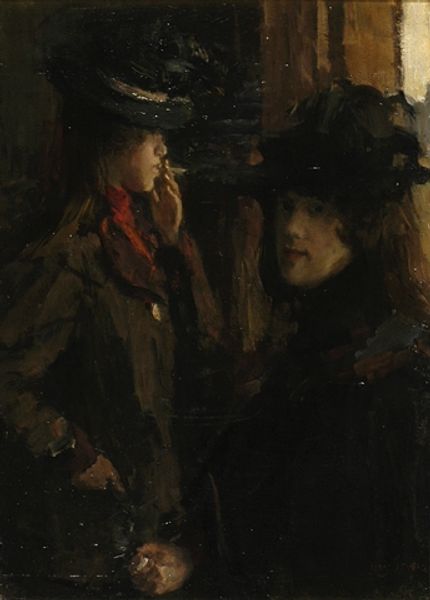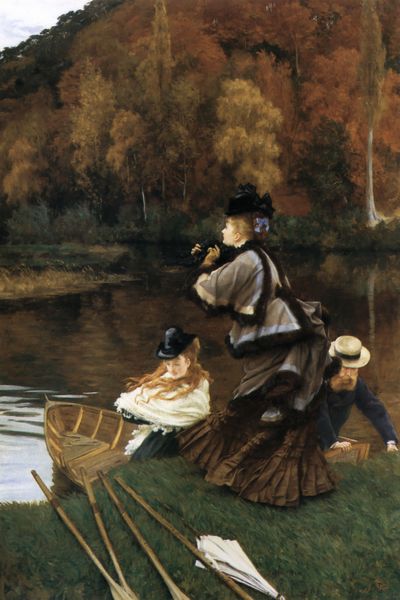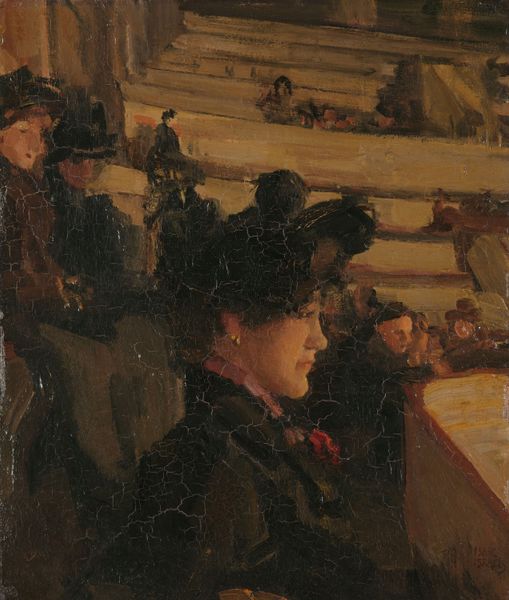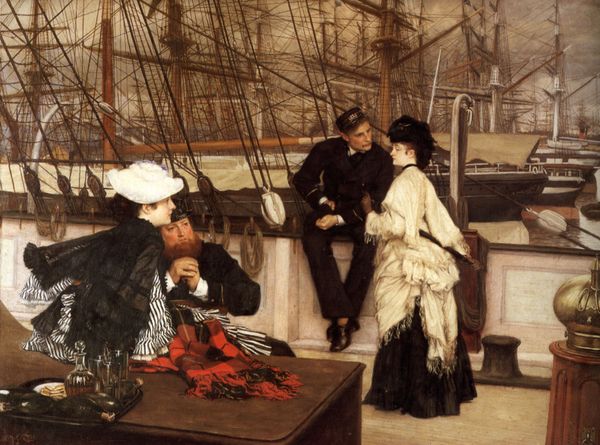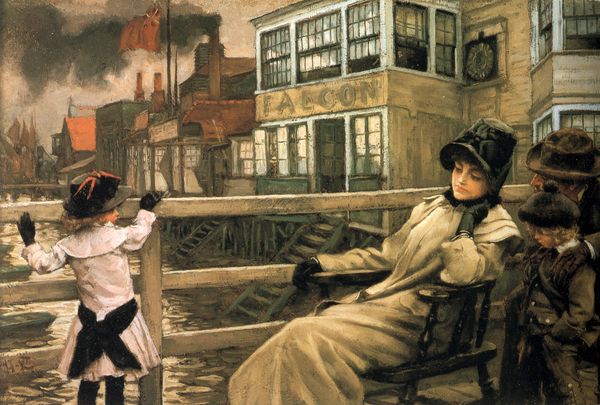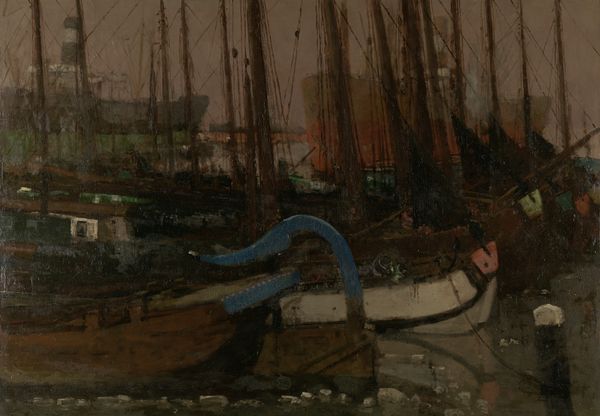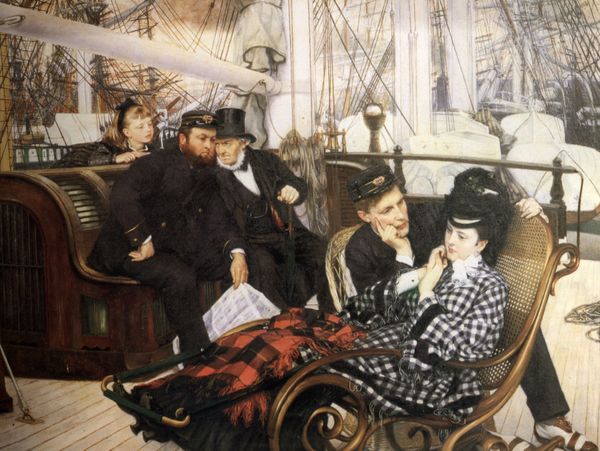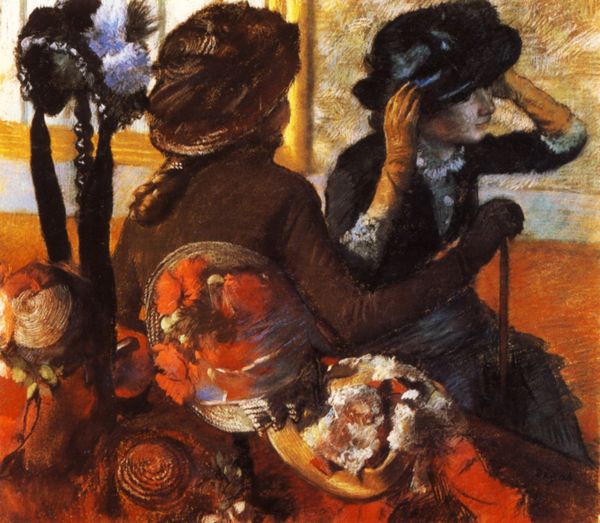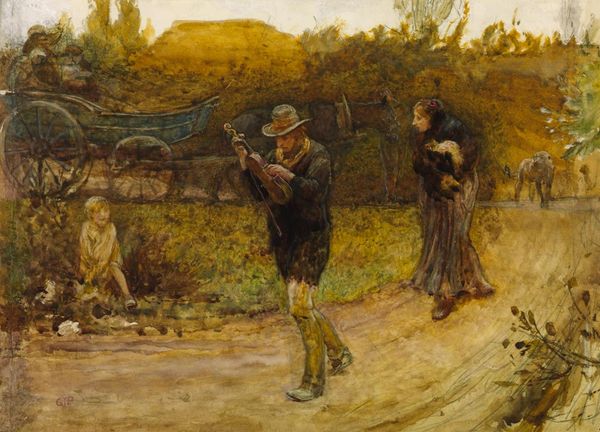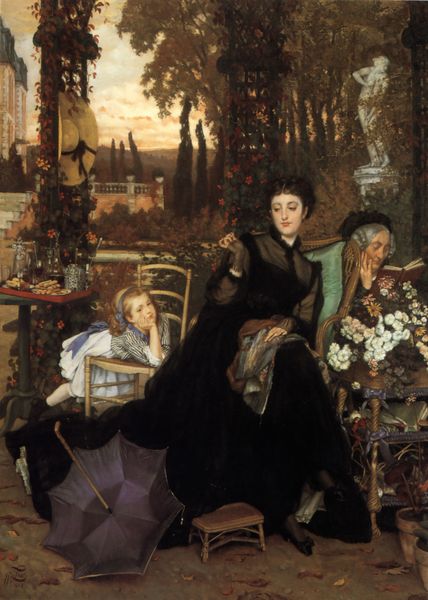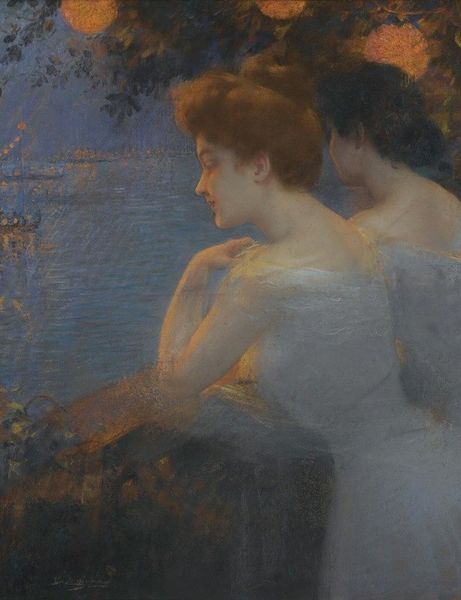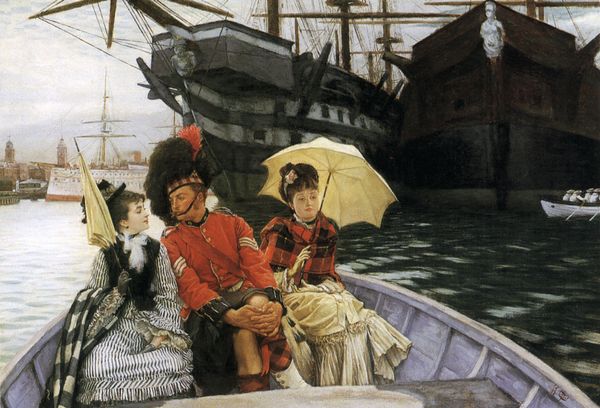
Dimensions: 19.6 x 30 cm
Copyright: Public domain
Curator: James Tissot’s painting, “By the Thames at Richmond. A Declaration of Love,” created in 1879, presents a glimpse into Victorian leisure. Editor: It feels muted, doesn’t it? The colors are so subdued, almost like looking at a faded photograph. I'm drawn to the textured surface; it appears almost tactile. Curator: Tissot, a French painter who achieved significant success in England, often depicted scenes of contemporary life among the British upper class, capturing their social rituals and pastimes. What stands out here is the staging. Note how he frames them alongside the park setting, almost like actors on a stage. Editor: Yes, and thinking about the labor of the painting itself, consider how much the texture adds. Look closely at that woman’s dress – the almost frenetic, tiny strokes. It really speaks to the painstaking work behind the piece, the materiality. What's the role of the industrial materials for the paints and canvas, for this type of subject matter, depicting members of high society engaging in leisure? Curator: The "declaration of love" in the title frames how we are meant to receive the image. Think about what love meant during the Victorian era; what rules and rituals, expectations and requirements were required from members of different classes? Tissot uses visual cues to imply this scene, creating a certain narrative expectation for the contemporary viewer of his time. Editor: Absolutely. And those expectations were deeply intertwined with the fabrics, dyes, and adornments that visually represented one's social standing. So while it's a painting ostensibly "about" love, the material context subtly conveys so much more, speaking volumes of societal restrictions. Curator: These “genre paintings” were a reflection of and contributed to the construction of Victorian society and its visual language. In a very direct way, they allowed the burgeoning middle class to gaze upon the elite, creating both aspiration and a certain understanding of cultural expectation. Editor: So, by considering what the physical stuff that the painting is made of, and the work behind that stuff, the very narrative around class and expectations of gender or love open up for us to examine. Curator: Exactly. Examining its public reception tells us how effectively it performed that function and contributes to how it operates as a piece of social history today. Editor: A fascinating conversation that takes the value of production seriously while simultaneously thinking about its subject matter. Thanks for this exploration.
Comments
No comments
Be the first to comment and join the conversation on the ultimate creative platform.
